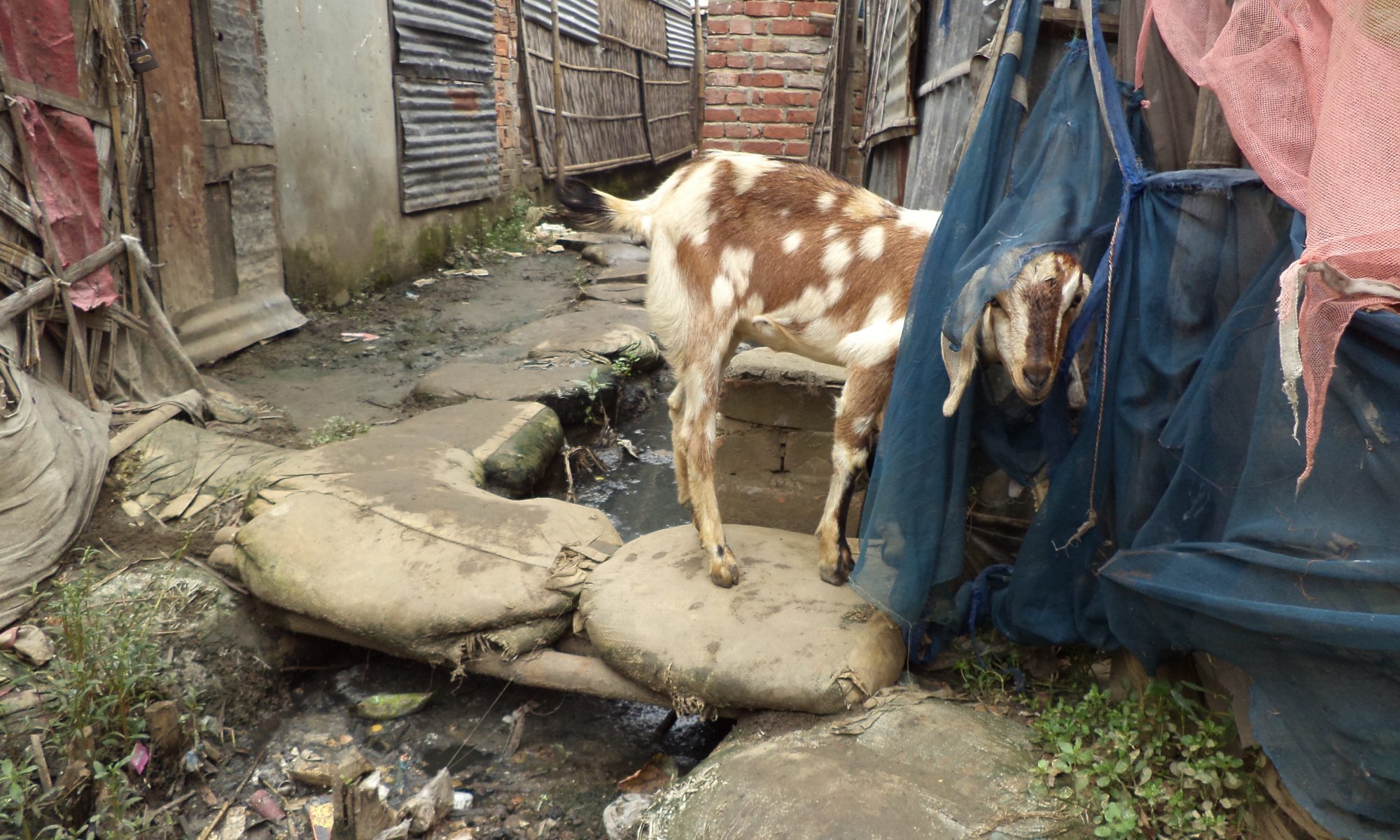CURRENT RESEARCH PROJECTS:
Characterizing Microbial Risks From Exposure to Tidal Floods
Tidal flooding is occurring at increasing rates in coastal communities due to sea-level rise. Recent research demonstrates that tidal floodwaters can be contaminated with fecal matter from human and animal sources. However, we do not yet know what causes fecal contamination of floodwaters, or what are the risks to public health resulting from these contaminated floodwaters. The goal of this project is to characterize risks posed to people who encounter floods either directly, or through recreation in coastal waterways that receive floodwater drainage. To achieve this goal, the project team will measure pathogens and microbial markers in floodwaters to assess fecal contamination sources and develop models to predict public health risks. The movement of floodwater into coastal waters will be tracked and modeled, and fecal bacteria will be measured to understand risks faced by swimmers and other recreators. Society will benefit from the results of this research as stakeholders can use the information to protect human health from emerging threats posed by sea-level rise. Additional benefits to society result from findings that may lead to the development of new engineering approaches for preventing or eliminating tidal floodwater contamination.
Collaborators: Natalie Nelson (BAE Dept.), Katherine Anarde (CCEE Dept.), Derek Grimes (UNCW)
Funding sources: NSF, NC Policy Collaboratory

Photo credit: Megan Carr
Assessing food, water, and energy insecurity in peri urban households in Malawi
Water insecurity interacts with food, energy, and sanitation insecurity in affecting psycho-emotional and physical health. Although significant evidence attests to these relationships, how these effects manifest across multiple measures and domains remains unresolved. Investigations of both qualitative lived experience and quantitative assessments of health and well-being outcomes will improve understanding of the utility of different methods addressing resource insecurity while providing holistic insights as to meaning of resource insecurity across life domains. This project combines theory and method from anthropology, geography, public health, and engineering and responds to calls for multi-pronged and interdisciplinary approaches to global health challenges. The research trains students and has direct relevance for policy analysts, development practitioners and academics grappling with domestic challenges of resource insecurity.

Collaborators: Cassie Workman (UNCG), Ayse Ercumen (FER Dept.), Andrew Grieshop (CCEE Dept.), Petros Chigwechokha (MUST), Rochelle Holmes (UL)
Funding: NSF
Wastewater surveillance of pathogens
Wastewater surveillance of pathogens became popular during the SARS-CoV-2 pandemic as a means to survey infections in a population connected to centralized sewage. Our group has validated wastewater surveillance for trends of SARS-CoV-2 infections relative to clinical surveillance, as well as compared these tools for genomic surveillance of specific variants of the virus. We are also investigating the use of wastewater surveillance for antibiotic resistant organisms as well as optimizing tools to concurrently test for a wide range of pathogens.
Collaborators: Rachel Noble (UNC Chapel Hill), Nick Turner (Duke)
Funding: NC Policy Collaboratory, Wake County Public Health, Duke Clinical & Translation Science Institute
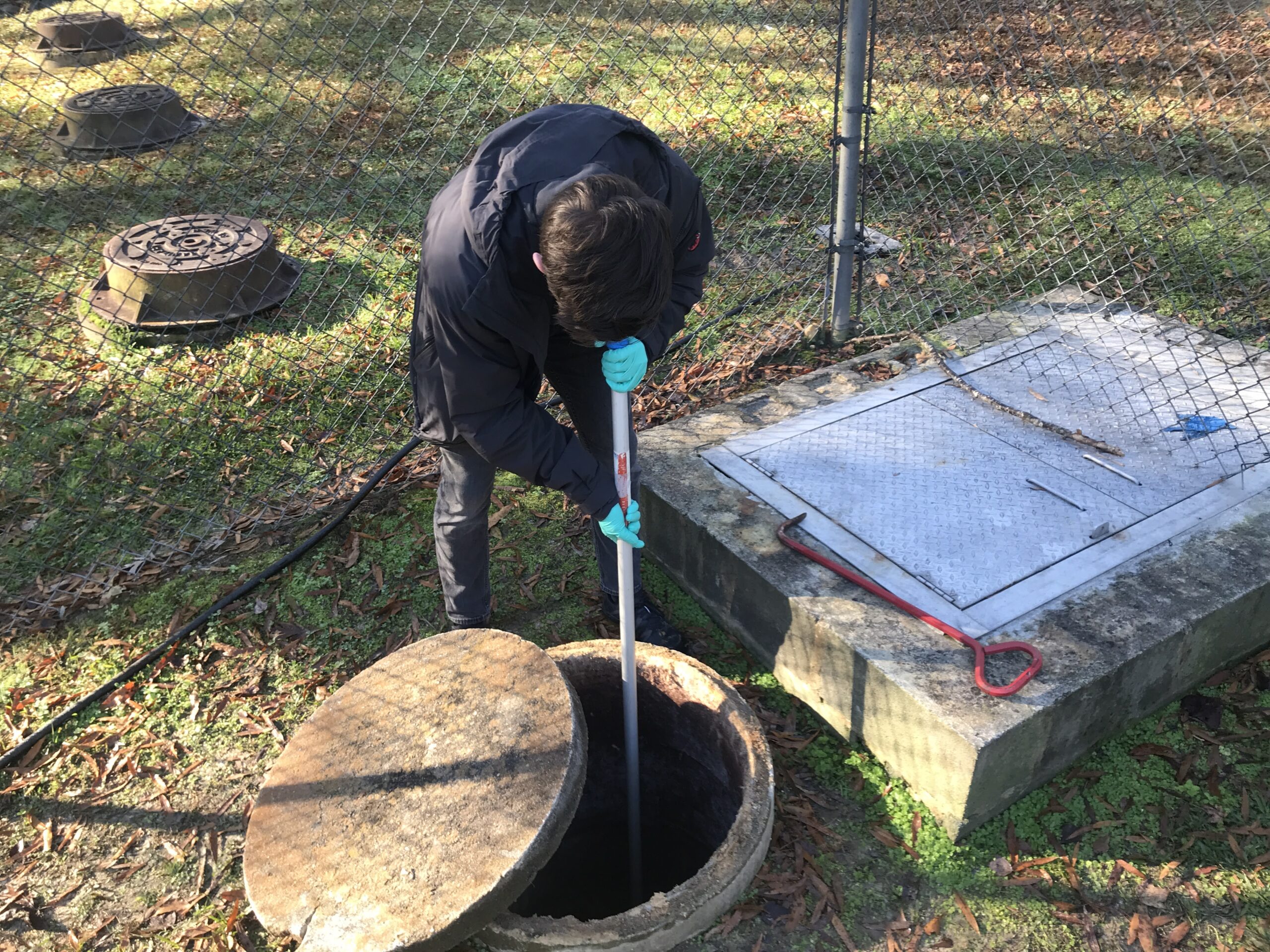
Pathogen Pathways Studies in Pastoralist Communities in Kenya
Identifying the dominant transmission pathways for enteric pathogens is important to inform intervention approaches to reduce child diarrhea and improve health. We investigated pathogens in children under 2 in pastoralist communities in Northern Kenya in a wide range of environmental media (water, food, soil, hands, fomites) and fecal specimens (child, caregiver, domestic animal) to understand the sources and pathways of enteric pathogen transmission.
Collaborators: Amy Pickering (UC Berkeley), Sammy Njenga (KEMRI), Peter LeFrancois (IPA-Kenya)
Funding Source: USAID

Photo credit: Abby Harvey
Towards Real-Time Fecal Indicator Bacteria Monitoring in Nearshore Waters
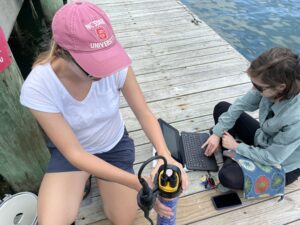
Antibiotic Resistant Bacteria in self-supply drinking water in Indonesia
Antibiotic resistant bacteria has been recognized by numerous intergovernmental organizations as one of the principal public health threats of the 21st century. The impact of antibiotic resistant bacteria will only be magnified in low- and middle-income countries which account for roughly 80% of the global burden of disease. Our group has developed new methods for detecting antibiotic resistant bacteria under field conditions, outside of a traditional laboratory setting to bolster global surveillance efforts for monitoring antibiotic resistant organisms. We have evaluated shallow ground water wells used for drinking water for antibiotic resistant E.coli. To identify the potential sources of these organisms, we have also assessed septic system effluent, soil, domestic animal feces, and floodwaters around homes. We have worked in Metro and Bekasi Indonesia.
Collaborators: University of Technology Sydney, University of Indonesia
Funding Source: Australia Water for Women Fund
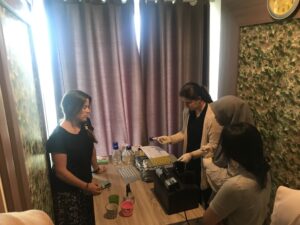
Field lab in Bekasi, Indonesia. Photo credits: Jeremy Lowe
Leverage Citizen-Science as a Tool in Disaster-Recovery and Community Resilience
Residents of Robeson County, NC experienced a resurgence of environmental awareness following Hurricane Matthew in 2016 that inspired concern over the potential distribution of bacterial contamination into human landscapes and systems, specifically the risk associated with municipal wastewater and livestock operations. To encourage individuals to consider relevant environmental risks after flood waters have receded and after the initial disaster response phase has passed, we have engaged Lumberton, NC residents who experienced flooding from Hurricane Florence in 2018 in a citizen science project focused on building community resilience to flooding. Semi-structured interviews were conducted with 18 Lumberton residents, in conjunction with citizen science soil sampling and a household survey, to explore coping strategies and feelings of self-efficacy. Survey results indicate households felt confident they could nurture close relationships in the wake of Hurricane Florence but felt less equipped to cope with emotions evoked by the storm and beginning to return to a normal routine. Soil testing results revealed fecal contamination in 64% of household samples, however federal or state regulations regarding fecal contamination are lacking and make this data more difficult to interpret. This project is in conjunction with Dr. Bethany Cutts in the Department of Parks, Recreation at NC State.
Funding Source: NC Sea Grant, Foundation for the Carolinas
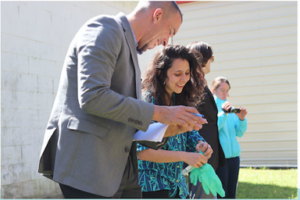
Showing soil sampling methods to community partners. Photo credits: Olivia V.
Understanding climatic drivers of surface water contamination
Description: North Carolina has experienced increased occurrences of extreme precipitation events, and research suggests these events are more likely to happen in the future due to anthropogenic climate change. Our group is involved in several studies to assess the water quality impacts of rainfall including extreme flooding in North Carolina in areas that represent diverse landuses (e.g., developed, industrial agriculture, forested). We are using advanced microbial source tracking methods to identify the animal hosts of contamination and also partner with other researchers to characterize water quality along multiple dimensions, including emerging pathogens and chemical contaminants. We have conducted studies after Hurricane Florence and Hurricane Dorian, and are involved in extensive monitoring of surface water quality in Cape Fear River, Neuse River, and Coharie Creek systems. We prioritize working closely with community partners, such as the Coharie Tribe and RiverKeepers, to make sure our results can empower informed decision making.
Collaborators include other faculty at NC State: Ryan Emanuel, Natalie Nelson, Chris Osburn, Jay Levine, Sophia Kathariou, Francis de los Reyes, and Mamoud Sharara.
Funding Source: NSF, NC WRRI, North Carolina Policy Collaboratory

Collecting surface water in Eastern North Carolina. Photo Credit: Tanvir Pasha

Collecting poultry litter for MST assay validation. Photo Credit: Breon Hanley
Informing irrigation water quality guidelines to protect human health Health Risks Associated with Animal Fecal Contamination in Irrigation Water
Irrigation water is often contaminated with both human and animal fecal matter from various municipal and agricultural sources. This contamination leads to food-borne illness within the United States with the Centers for Disease Control and Prevention estimating one in every 6 Americans get sick, 128,000 are hospitalized, and 3,000 die of foodborne illness. The Food Safety Modernization Act (FSMA) created guidelines for irrigation water quality based on the presence of E. coli; however, these regulations are based on the EPA criteria for recreational water. Various limitations exist from using recreational water as a basis for irrigation water quality. Farmers, policy makers, and researchers need to understand the health risks associated with fecal contamination of irrigation water to be able to set accurate thresholds for E. coli contamination to protect human health. We are involved in QMRA studies to assess the human health risks associated with varying levels of fecally contaminated irrigation water stemming from different animal hosts.
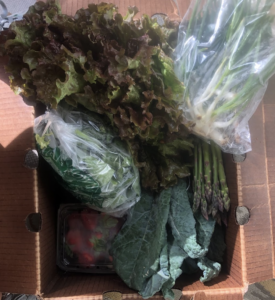
Box of leafy greens. Photo Credit: Kendall Zorn
